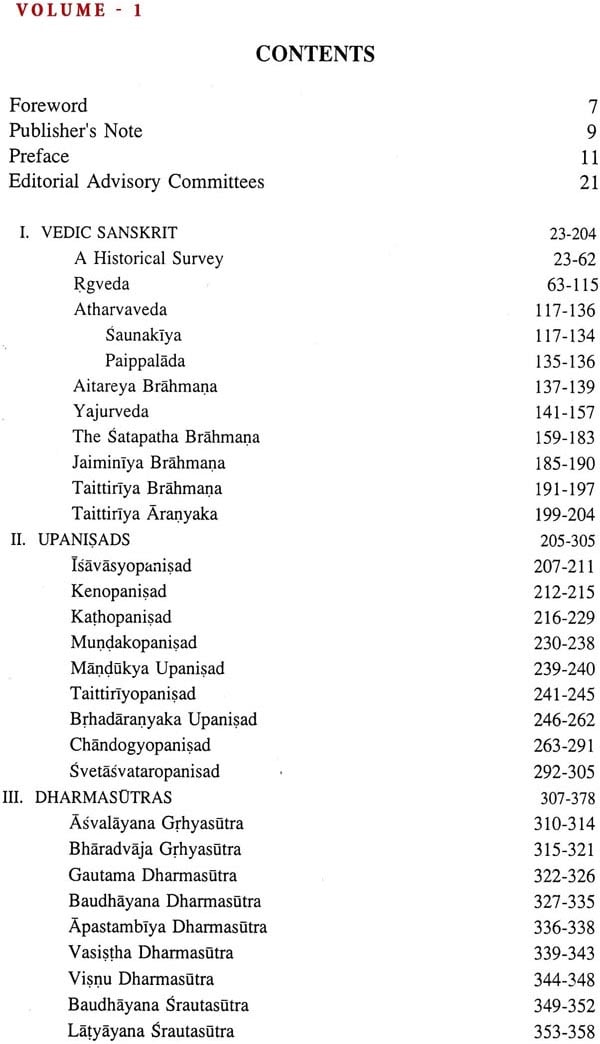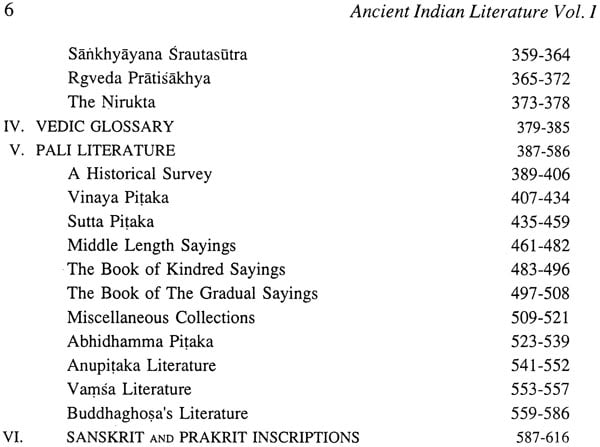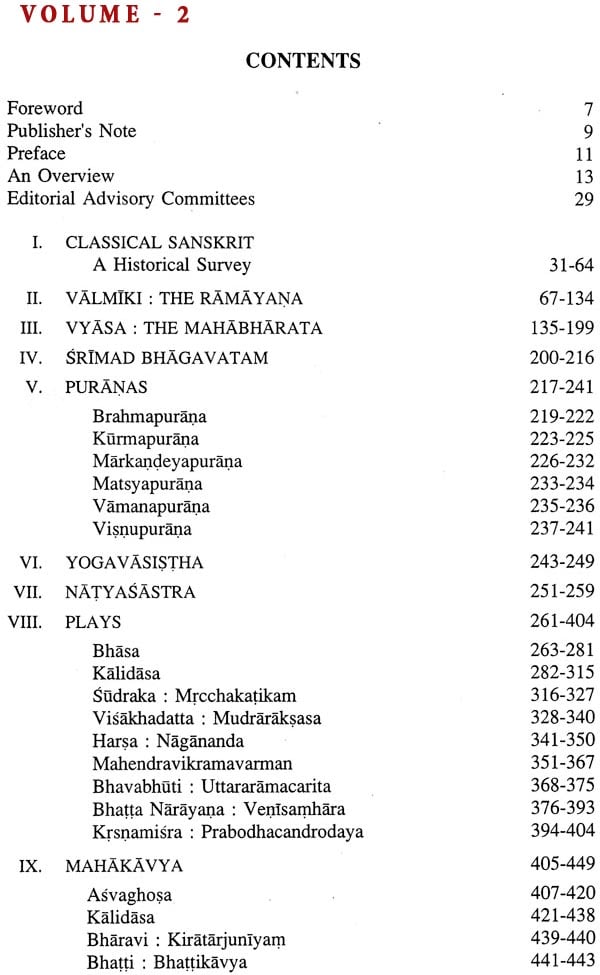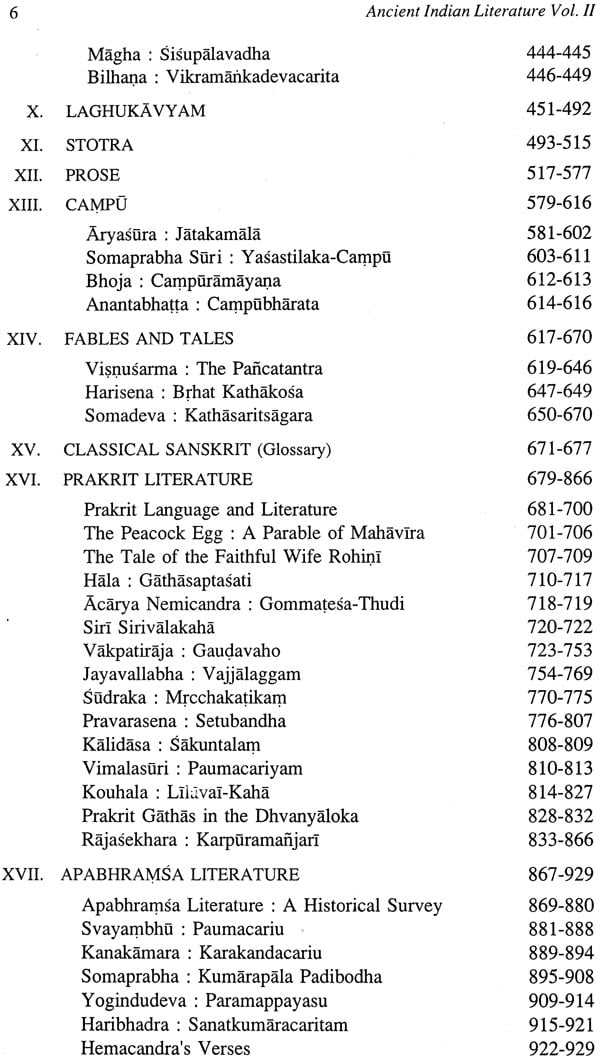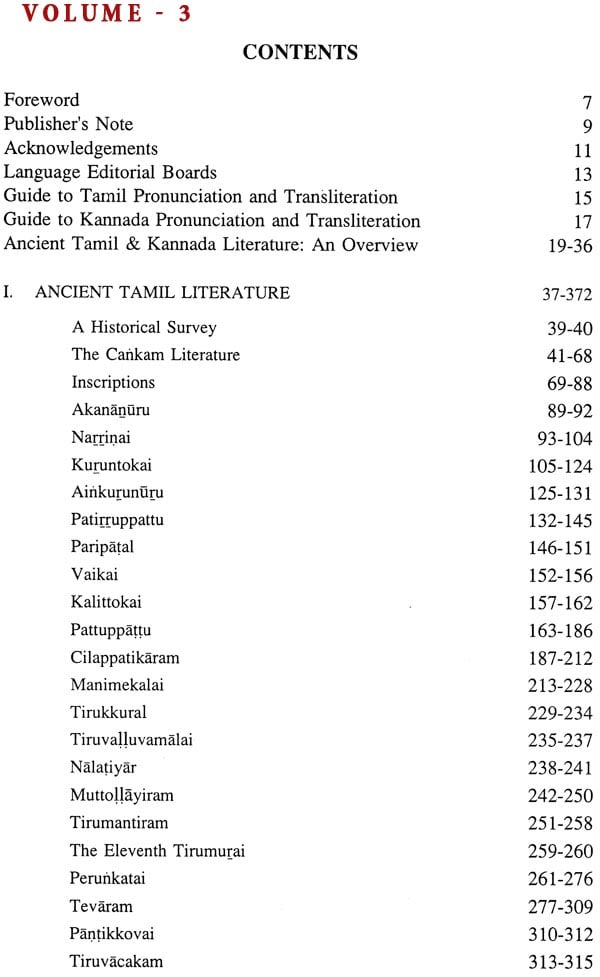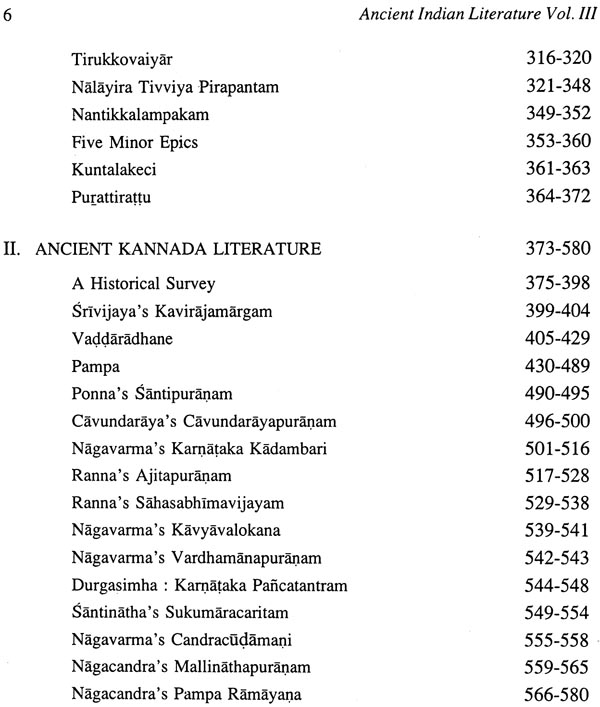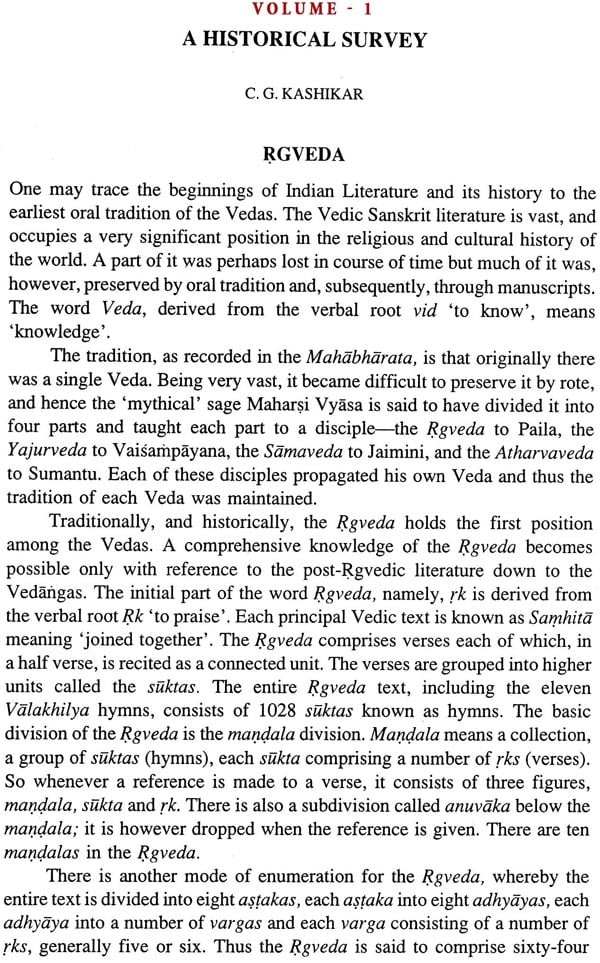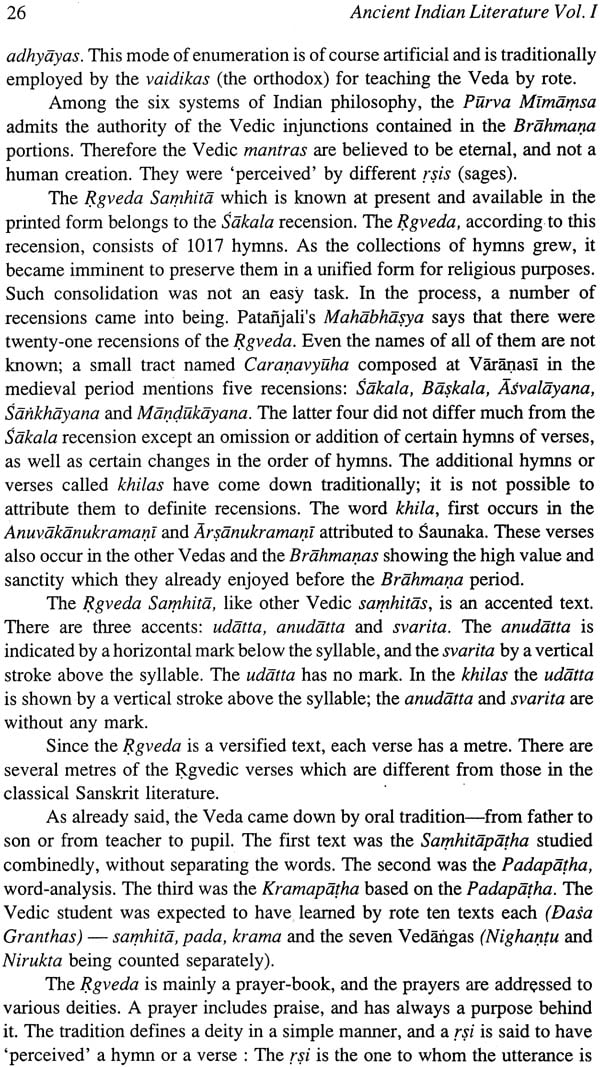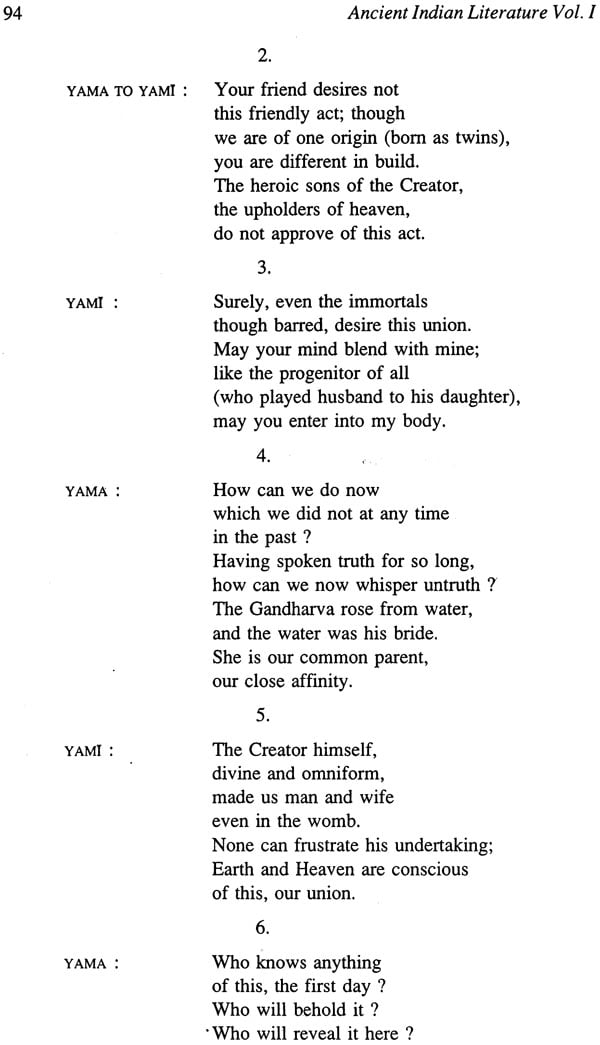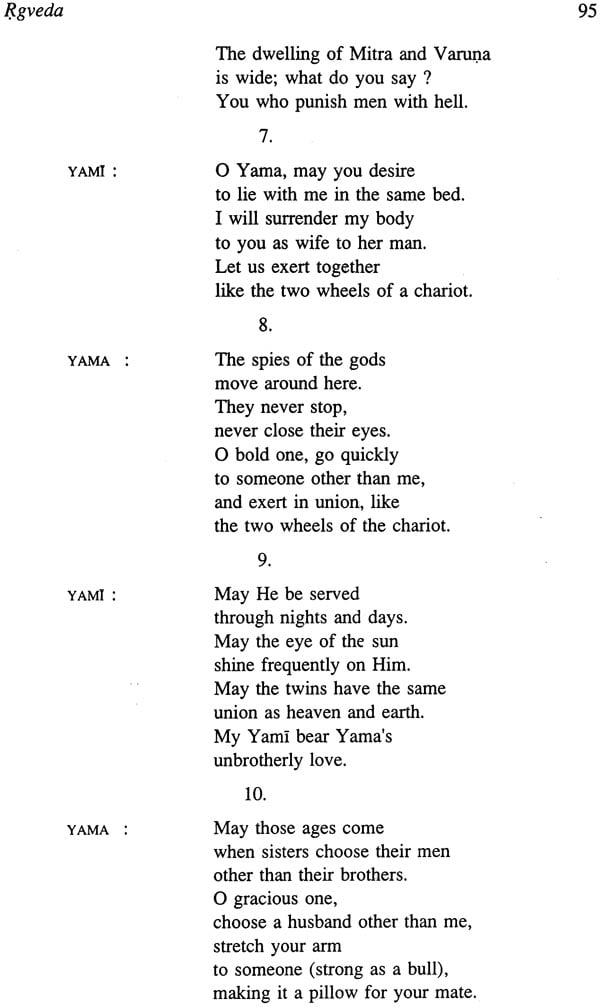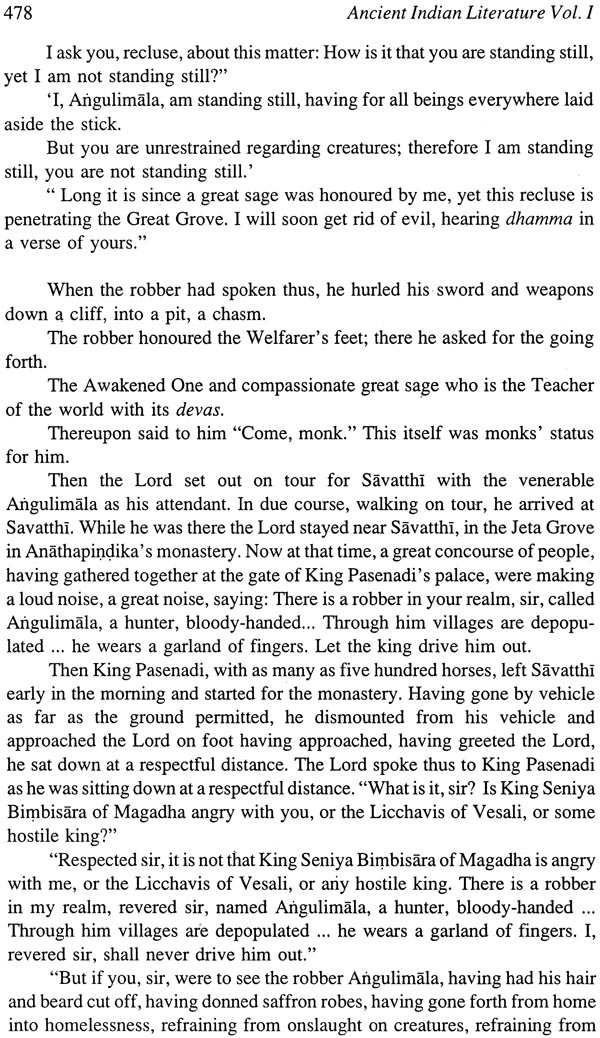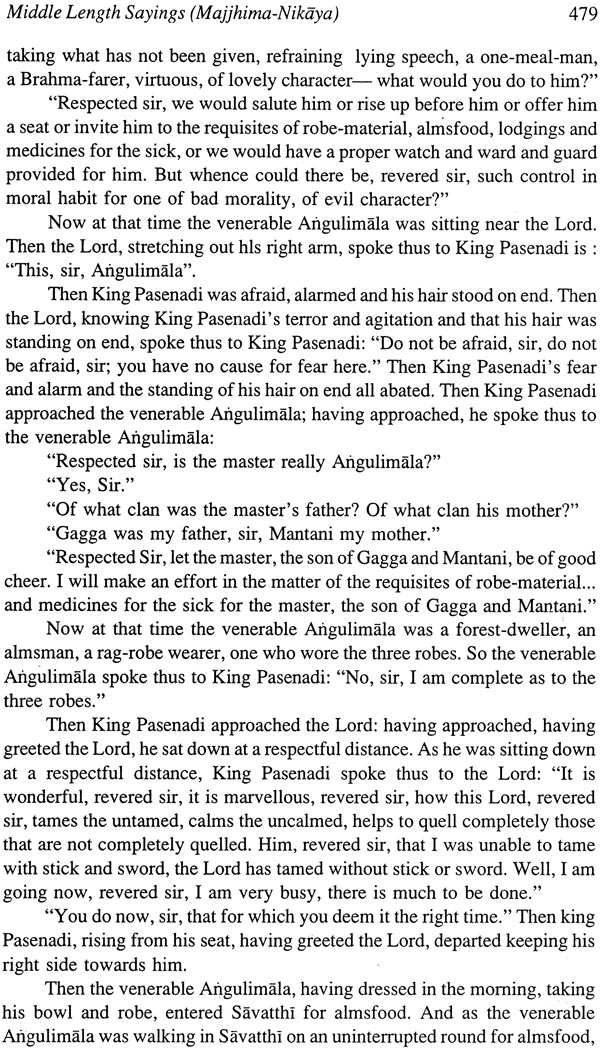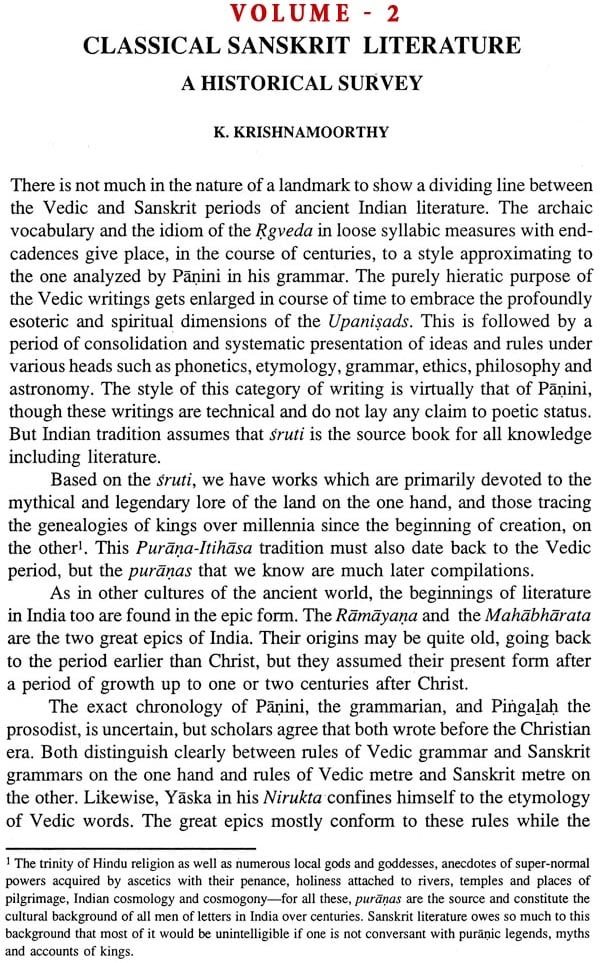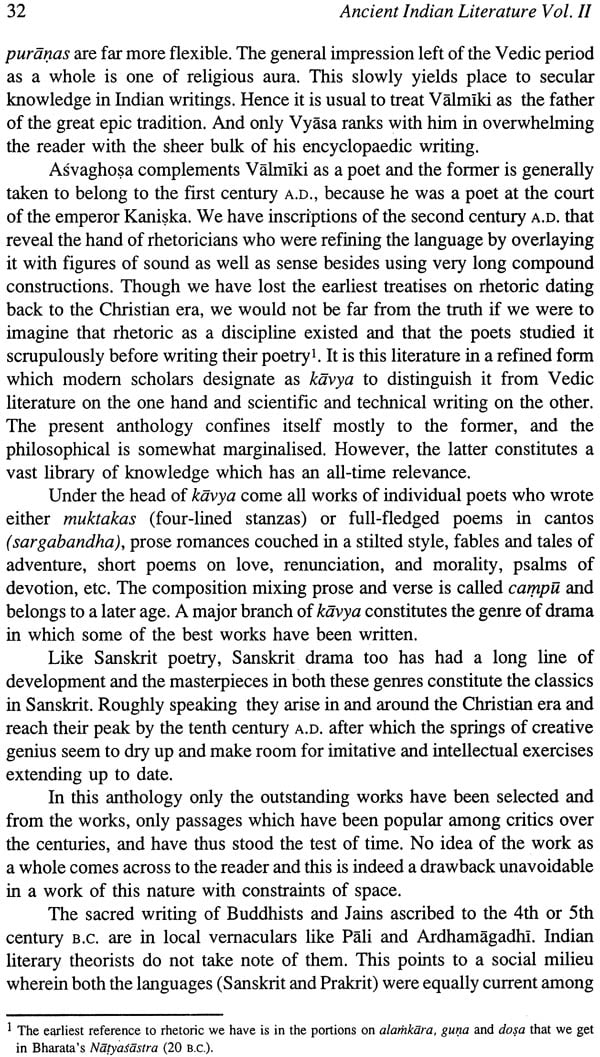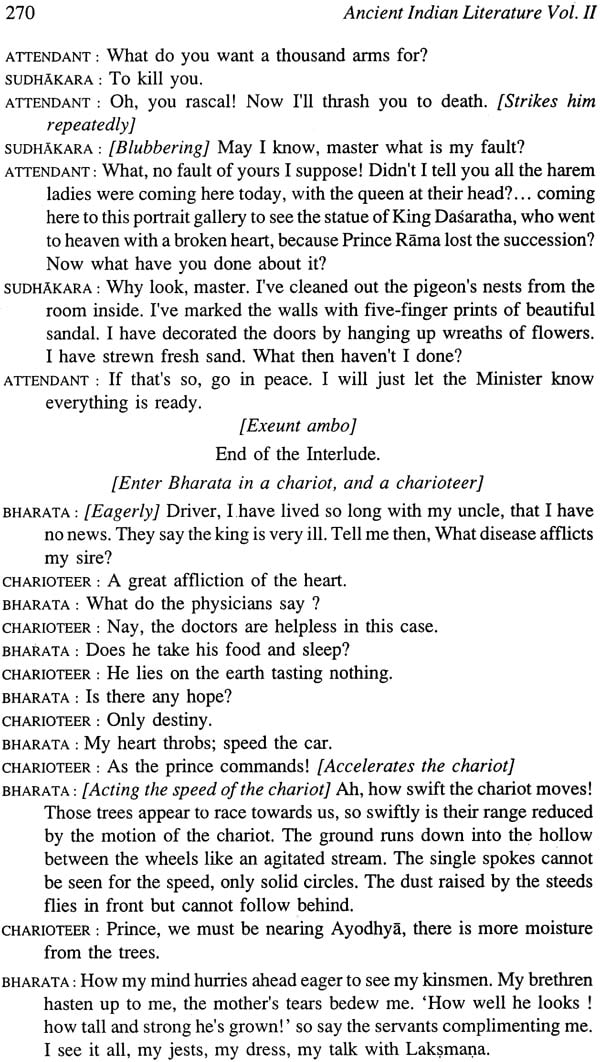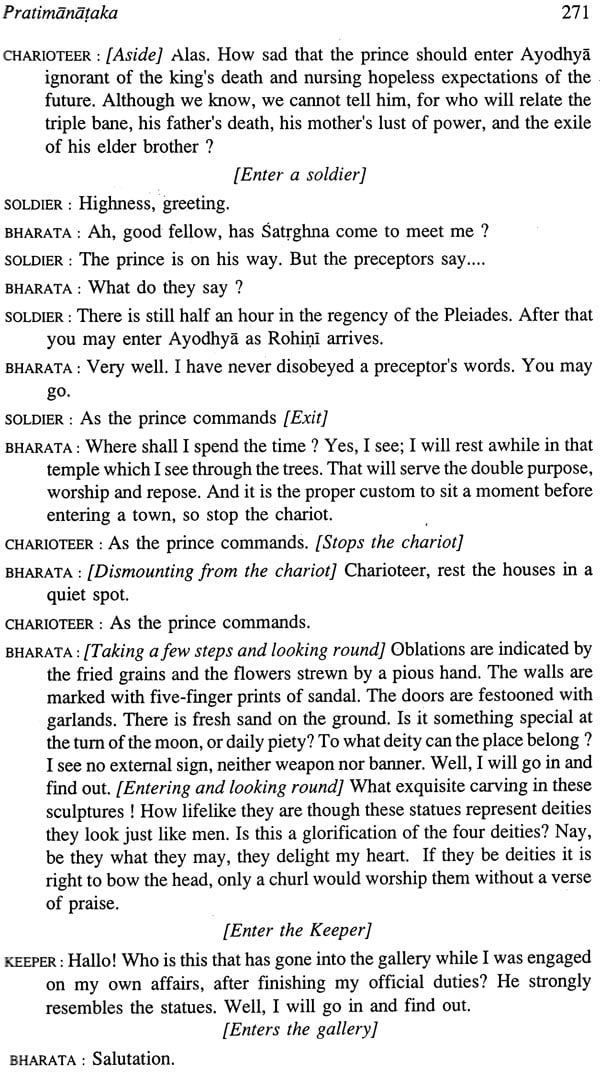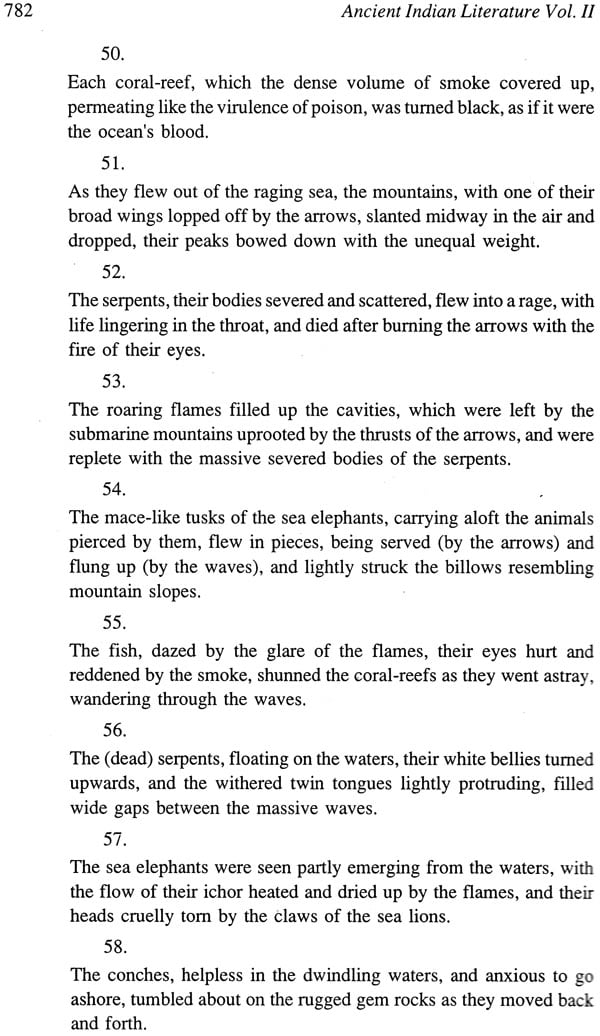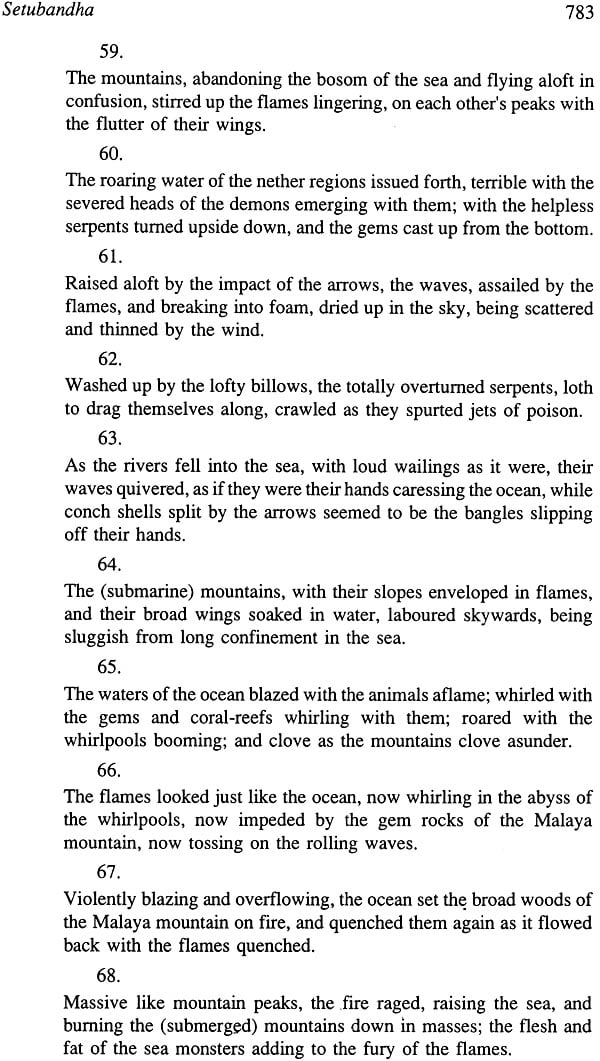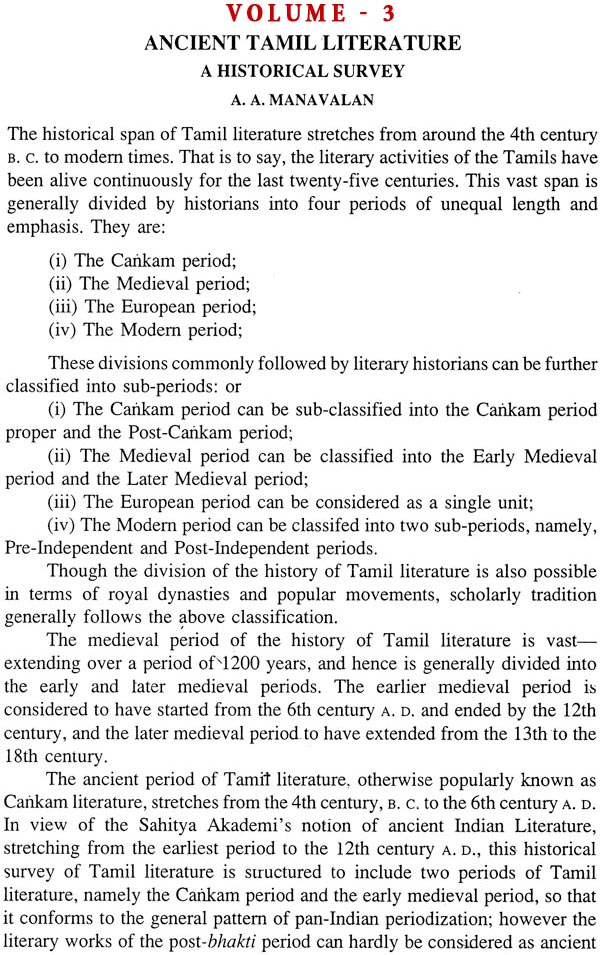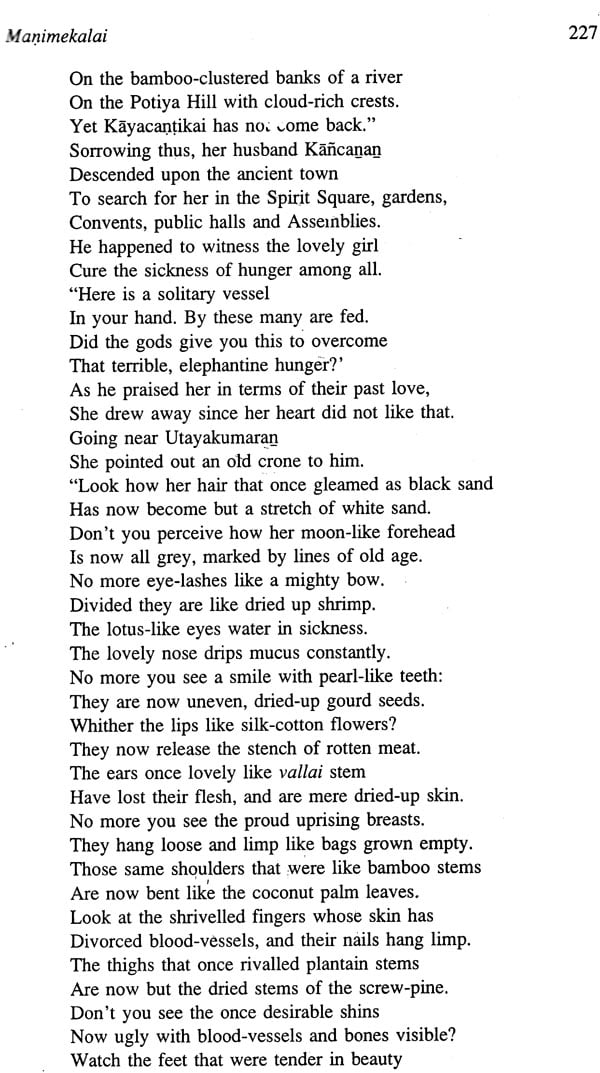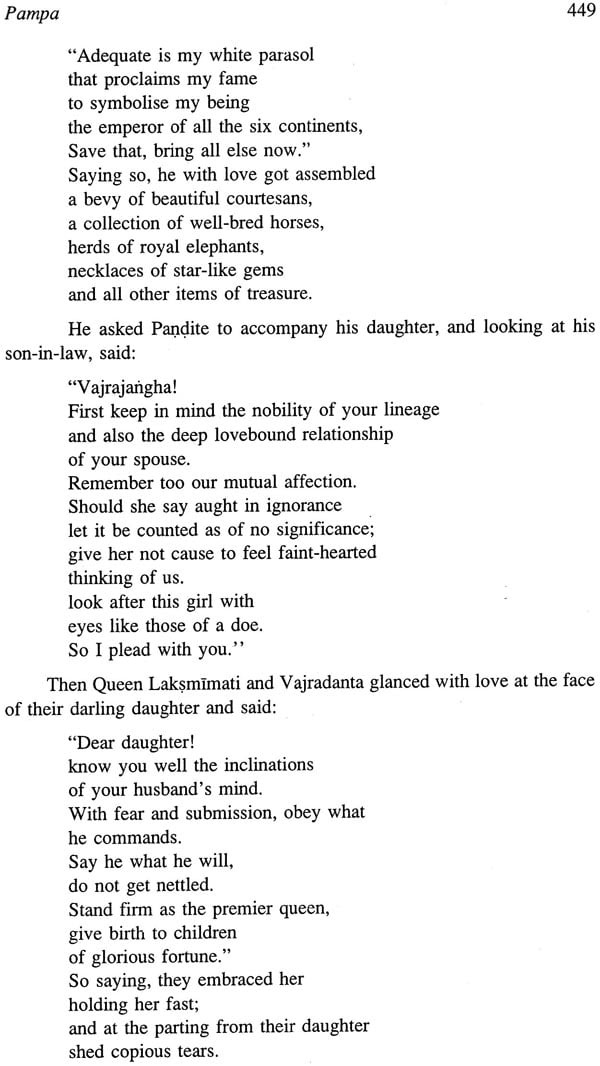
Ancient Indian Literature - An Anthology (Set of 3 Volumes)
Book Specification
| Item Code: | NAR434 |
| Author: | TRS Sharma |
| Publisher: | SAHITYA AKADEMI, DELHI |
| Language: | English |
| Edition: | 2014 |
| ISBN: | 9788126007943 |
| Pages: | 2224 |
| Cover: | HARDCOVER |
| Other Details | 10.00 X 6.50 inch |
| Weight | 3.80 kg |
Book Description
Ancient Indian Literature ñ an anthology in three volumes ñ is the outcome of a monumental project taken up by the Sahitya Akademi. It consists of selections in translation of Indian literature from the beginning to AD 1100. The selections of passages included in these volumes focus on the Indian world view, manís life in general and particular, and how these are reflected in literature.
The anthology provides a fairly detailed historical survey which reveals the major trends and changes in the development of literatures during the given period.
Volume One covers Vedic Sanskrit and Pali texts together since they represent two scriptural traditions which have given rise to two major religion of the world. These texts depict the entire spectrum of the journey of human life-from desire to knowledge or from darkness to light; from the ephemeral to the eternal.
The Chief Editor TRS Sharma, educated at the Universities of Mysore, Colorado and Alberta, has taught literatures in English in the Universities of Delhi, Alberta, Annaba (Algeria) and kakatiya. He was senior Academic Fellow and Deputy Director at the American Studies Research Centre, Hyderabad (1987-89). He has to his credit three published works ñ Poetic Style in Robert Frost (1981), Tale of the Glory-Bearer, an English verse translation of medieval Kannada classic Yasodhara Carithe by Janna (1994), and Toward an Alternative Critical Discourse, on Indian Aesthetics.
C K Seshadri, the Executive Editor, was educated at the universities of Mysore, Leeds and Toronto. He retired as Professor and Head, Department of English, M S University of Baroda.
June Gaur, the Executive Editor, is a freelance journalist, writer and an art critic.
Is Indian literature one or many, a single whole or a mosaic ? This question has been asked again and again. However, there is no denying the fact that there is a deep social, cultural and spiritual unity in the whole of the subcontinent that is amply evident in its literature. The quantum of literature written in various Indian languages is astonishing. Though written in several languages in different ages under diverse social conditions, one can see a unique quality permeating the whole of Indian literature ó what we may call the 'soul' of India.
Indian literature today means literature produced in the Indian languages beginning with the Vedic Sanskrit in the ancient past to what is written today even in English, a language we have adopted. The rich tradition of Indian literature spans a period of about 4000 years. The Rgveda is the earliest known Indian literary work. The three Vedas, Samhitas, Brahmanas, Aranyakas and Upanishads followed. In the later stages, classical Sanskrit evolved from Vedic Sanskrit and thrived for more than fifteen centuries. The popular vernaculars also grew side by side. There was also Pali, the language adopted by the Buddha, in which a vast quantum of literature was produced. There was Ardhamagadhi, the vehicle of Jain thoughts, and there were too various Prakrits and Apabramsas which also had considerable literature of high quality. Apart from these, there were two languages of South India, viz. Tamil whose first known works of literature date back to 2nd or 3rd century B.C., and Kannada which has an antiquity of about twelve centuries.
The selections in the three volumes of Ancient Indian Literature focus on the Indian world view, life in general and man's life in particular and its meaning as reflected in literature; enduring human values cherishable in every age and the immense expressive power of the language of the age.
The present volume, comprising selections from the Vedic and Pali texts, is the first of a proposed three-volume anthology of Ancient Indian Literature. The second volume of the anthology consists of selections from the Classical Sanskrit, Prakrt, and Apabhrarnsa literatures while the third volume comprises selections from the Tamil and Kannada classics till A.D. 1100. The cut-off date for the anthology, A.D. 1100, may sound somewhat arbitrary but is chosen more for convenience than for representing any significant historical change. These three volumes, however, constitute only a part of a monumental project launched by the Sahitya Akademi, (The National Academy of Letters, India) with the aim of publishing a comprehensive anthology of Indian literature which would cover, say, 4000 years of literary writing till the present day.
The project has been divided into three periods as shown below:
1. Vedic Sanskrit and Pali Literatures (from the beginning upto A.D. 1100.
2. Medieval Indian Literature (from A.D. 1100 to 1800) 3. Modem Indian Literature (from A.D. 1800 to 1975)
The preliminary work for the Ancient Indian Literature project was achieved in three phases: laying out the ground plan, deciding the period to be covered in ancient literatures, and constituting committees of experts and language editors besides who would choose well-known passages for translation into English from the classics in each of the seven languages comprising the three volumes. The language editors were to write a detailed historical survey noting the changes in development in each of the literatures anthologised. This groundwork was accomplished under the able chief editor Professor Malledevaru, the then Professor of Sanskrit at the University of Mysore.
The groundwork, consisting of planning the entire project and formulating the criteria for selection from the classics took almost a year, at the end of which, unfortunately, Professor Malledevaru passed away. The project work, however, continued with Vidwan H.V. Nagaraja Rao as deputy editor. A little later Professor Ha. Ma. Nayak, the well-known Kannada litterateur, joined the project as Chief Editor. Corresponding with potential translators, xeroxing selected passages from the already published material had begun by then, but when the second Chief Editor resigned after nearly a year, only a few manuscript items had trickled in in Tamil and Classical Sanskrit, with much more work yet to be accomplished. That is when the present Chief Editor undertook to complete the project. The problem was still to find good translators in Tamil, Kannada, Prakrt, and Apabhramsa. Vedic and Classical Sanskrit did not pose such insuperable problems as the other languages did. While many European scholars had translated entire works of Sanskrit, few of them had ventured into Prakrt and Apabhramsa and none in Kannada. Ancient Kannada classics were indeed virgin territory, and none had even thought of translating some of the well-known onesóthe later vacanas in English translation falling under medieval literature.
Most scholars we had contacted for help in Prakrt and Apabhramsa were somewhat reluctant to help: several of them initially agreed to translate selected passages but did not come up with anything concrete, with the result that our Prakrt and Apabhramsa sections look relatively slim, and spare.
Ancient Indian literature is vast and spans a period of nearly 3000 years, that is, if the cut-off date happens to be A.D. 1100. Rgveda, usually said to be the oldest extant book of hymns in the world, marks the beginnings of Indian literature. Then follow the other sections of the Vedas: the Brahmans, the Aryanakas and the Upanisads. This Vedic phase is followed by the sutra-literature, and the later discourses in aphorisms on dharma (the law), the various ritual rules, ceremonies, and fire sacrifices, which constituted the social practices of the times and held the communities together. As literary writing it is surely insignificant, but has much to offer by way of ethnic lore, and a religion which covered every aspect of human life from birth to death.
The sutra literature also forges the link between the Vedic and the Classical Sanskrit literature. Texts after Panini are usually said to be written in classical Sanskrit, and there arose during this time numerous genres such as itihasa, purana, gadya (prose), campu (a mixture of prose and verse), nataka (drama), bhasya (commentary), and Sastra (scientific treatise). Consequently, Sanskrit texts proliferated, but this enormous growth did not preclude the spoken languages such as Pali, Prakrt, and Apabhramsa from developing their own literatures, sometimes in the shadow of, but more often as countering the mainstream Sanskrit literature. It is common knowledge that Prakrt often mingled with Sanskrit in the same text (as in drama), but the Buddha and his immediate followers used Pali exclusively in order to produce their religious texts. Apabhramsa, mother popularly spoken language, also contributed works to Indian literature, with themes often collateral with those in Sanskrit. And in the South, literatures in Tamil, and a little later in Kannada emerged full-fledged during the same time. The scope of this project was to cover all this amazing variety of literatures produced in India before the 11th century A.D.
The plan followed in formatting the text will be the same as that of the other two projects indicated earlier. The anthology will provide a fairly detailed historical survey for each literature of the concerned languages, which would be written by the respective language editor in consultation with the specialists in that language. The survey Would reflect the major trends and changes occurring in the development of literatures at the given period and shed light wherever possible on the selected passages by viewing them in a wider perspective.
The Vedic and the Pali texts have been put together in the present volume as they represent two scriptural traditions which have given rise, through processes of reification, to two major religions of the world. Viewed in a historical perspective, these texts act as point and counterpoint, and thereby convert the interface between them into a site of contestation. The Vedic texts, being earlier, register some of man's earliest attempts to mythify his position in relation to the world, and create for himself the possibility of a dialogue with the unknown. In this epistemic venture, he creates his gods and deities, and founds a mythology which can sustain his life-world. Besides, this interminable dialogue he carries on with the unknownó`the old chaos of the sun'óa dialogue, polyphonic and implicit in the Vedic and the Upanisadic texts, sets the hidden scenario for some of the major articulations of a culture.
The Buddhist Pali texts, on the other hand, posit man's dialogue, not with the unknown, but with himself, however momentary his self-identity may be, and in the process, evolves an ethical code by which the texts envisage man as working his way up to the status of a god or arhat. If the Fire sacrifice and soma, the celestial drink, constitute the iterative motifs of the Rgvedic hymns, and their canonical elaborations in the subsequent Vedas, thereby giving rise to an esoteric world, the Buddhist texts through folk-motifs and anecdotes elaborate on the fabrications of man, his ethical effort and the conditions of possibility for him to elevate himself to the position of the Enlightened. These two kinds of texts, therefore, when juxtaposed, are held together in a frame of mutual dialogue, each offering a critique of the other, and both continuing the dialogue of subversion and self-restoration.
While it is not possible to say when the Vedas were composed, we can derive with some certainty a relative chronology of the various texts. The earliest text is, no doubt, the Rgveda, a Sruti (about 2000 B.c.), meant to be recited and heard, and is preserved for centuries. The text comprises a set of hymns, prayers addressed to various gods and deities, hymns which the sages composed in the first flush of poetry and sang in order to propitiate them. It is most likely that the Vedic gods such as Agni, Maruts, and Parjanya, are constructed from natural phenomena, say, from fire, storms, and rain, and the worshipper is engaged in a dialogue with them almost in a tone of intimacy and persuasiveness. There is no awe, or fear involved in the devotee's approach to these gods. Instead there is markedly a poetic wonder as in the hymns to Visnu, Rudra and Indra. Often these gods are deified warlords, and Indra's conquest of Vrtra is, for instance, celebrated in the community with the exhilarating drink of soma.
For those who are used to regarding the Vedas as sacred scripture, there are quite a few surprises in store. The selections included in this volume represent a variety of concerns and desires, both sacred and profane, with the overall tone which can be said to be predominantly secular'. The first few hymns invoke the various gods such as Agni, the primeval firegod and, symbolically, chief priest, who mediates between humans and the gods; Visnu who takes three magical strides and covers the entire universe, this, nether, and the other world; Rudra, the mountain and forest god; Varuna, the `imperial ruler' who instils fear and trembling in mortals for their wrong-doings. And Indra, yes, when it comes to Indra, the myth expands, and becomes more eloquent : a mighty warrior, a chief warlord, known for his brave exploits, for he drinks the soma juice and kills Vrtra, the demon, with his thunderbolt. But "before he killed Vrtra, he drank off three ponds full of soma; once... he drank thirty ponds of soma in one gulp" (quoted by Winternitz). Such inebriate exploits can only be poetry! This warlord being deified acquires many more attributes, and traverses through the epics and the puranas as the king of gods. And there is also a hymn that glorifies the drink of soma, so dear to the gods, which plays a prominent role in the sacrificial rites. On the other hand, there is the amazing nasadiya sutra with feelings of awe and wonder at the mystery of creation which, the sutra concludes, not even the gods can fathom!
**Contents and Sample Pages**
